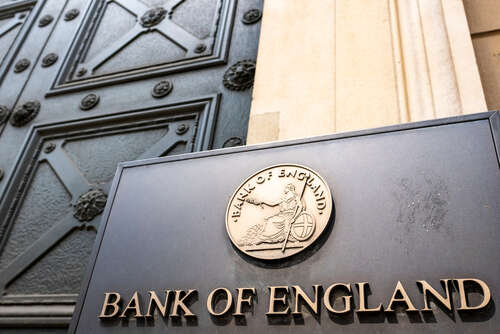
Developing a resilient, safe and secure central bank digital currency (CBDC) for the UK, known as the Digital Pound, will take at least five years according to the deputy governor of the Bank of England Sir Jon Cunliffe. This will involve working with the financial services sector and private companies, he told MPs examining the need for such a technology.

When asked by MPs on the Treasury Select Committee to rate the likelihood that we will need a CBDC in the UK, Cunliffe put the chances at 7/10. He said this means preparation must begin now. “The difficulty we have with this is if we just wait until it is nine out of ten [chance of needing a CBDC], we are five years away at least [from implementing it],” he said. A CBDC, Cunliffe said, is “a serious thing that has to be resilient, fraud-proof and secure. If we wait until we think it is needed we will be five years behind.”
The Treasury announced earlier this month that it would make a decision on whether to launch a Digital Pound by 2025, giving the Bank of England and commercial partners time to test and investigate the technology. It followed a consultation paper published by the Bank of England that said some degree of CBDC would be needed in the future.
The Digital Pound and managing risk
It will take some time to get to that point, as it will require at least five years of research, development, testing and policy work before a safe and secure digital asset can be developed that meets societal and economic requirements including protecting against fraud, Cunliffe said. “We do not have the technological skills at the moment but hope we will by the end of this next phase,” he added. “With private-sector partners, we will move to create working prototypes in a simulated environment, then live environments, then implementation and this next stage puts us in a position to do that.”
He told MPs there were several reasons to launch a Digital Pound, not least the decline in cash usage which was projected to continue. As the technology will take half a decade to complete, it was important to work on having it “ready for market” as soon as possible, even if the eventual decision is not to roll out a CBDC and to focus on more traditional solutions instead.
“Cash is no longer fully functional money in our economy, you can’t use it on the internet or in certain retail outlets,” Cunliffe said. “That is what is going to drive the decline in cash, that it can’t be used in the way people live and transact now. This would add another digital option. Cash will decline not because digital options will be created, cash will decline because it is not usable.”
He continued: “There are lots of motivations for a Digital Pound and the way you would structure a digital pound is different. Our basic motivation is to provide digital cash, the digital equivalent of bank of England notes for payment purposes. We didn’t want a system where we would be producing something with the characteristics of a savings product, this is about payments and only payments.”
The other main reason he outlined for introducing a CBDC was reducing the risk of a monopoly or duopoly developing around digital currencies in the future. He said it was inevitable one or more private companies would develop stablecoin frameworks and companies wanting to build digital finance applications would be forced to turn to one of these companies. “Think about what app stores are doing, where developers have to use platforms money in order to buy games and services,” he warned. “The question is; is there a role for the public sector to provide the settlement asset and central core infrastructure, then make that open to private sector developers to create payment processes?”
This, he said would limit the risk of a small number of companies controlling most of the UK’s future financial infrastructure. “We are not saying it is the only way but it provides an alternative and requires all other forms of money to be exchangeable into that currency.”
Required for a digital economy
Alastair Johnson, co-founder and CEO of digital identity platform Nuggets said digitisation of the economy is growing as individuals and businesses shift towards digital payments, explaining that CBDC could be a more efficient, private and secure transaction method.
“Financial inclusion could increase with a CBDC with a low-cost means of conducting transactions and bank services for the unbanked or underbanked,” he said. “With the advancing growth of digital transactions through cryptocurrencies, central banks could benefit from using similar advanced technology to provide similar services and benefits.”
There are risks though, said Johnson, which include the fact the system would be more vulnerable to cyberattacks, theft of funds and disruption to the financial system if not executed properly, which is something Cunliffe said was why it would take so long to implement. “I don’t know the how [of mitigating risk] as that is the next area we need to explore,” the Bank of England executive said.
“There is also a tension between preventing fraud and privacy and a tension with speed and performance,” Cunliffe told MPs. “The design will have to balance those things. Security, resilience and privacy are three areas where we need to see what is technologically possible and the extent to which we can do those things without compromising performance.”
Johnson told Tech Monitor: “The introduction of a CBDC could have unintended consequences for the financial system, such as reducing the demand for bank deposits and destabilizing the banking system”. The Bank of England hopes to combat this by limiting Digital Pound withdrawals.
“To combat the risks, central banks and policymakers must implement robust cybersecurity measures, ensure adequate privacy protections, and consider the potential impact on financial stability and the legal and regulatory framework,” Johnson added. “Policymakers would also need to engage in public education and awareness to ensure that individuals and businesses are fully informed about the potential benefits and risks of a CBDC.”






